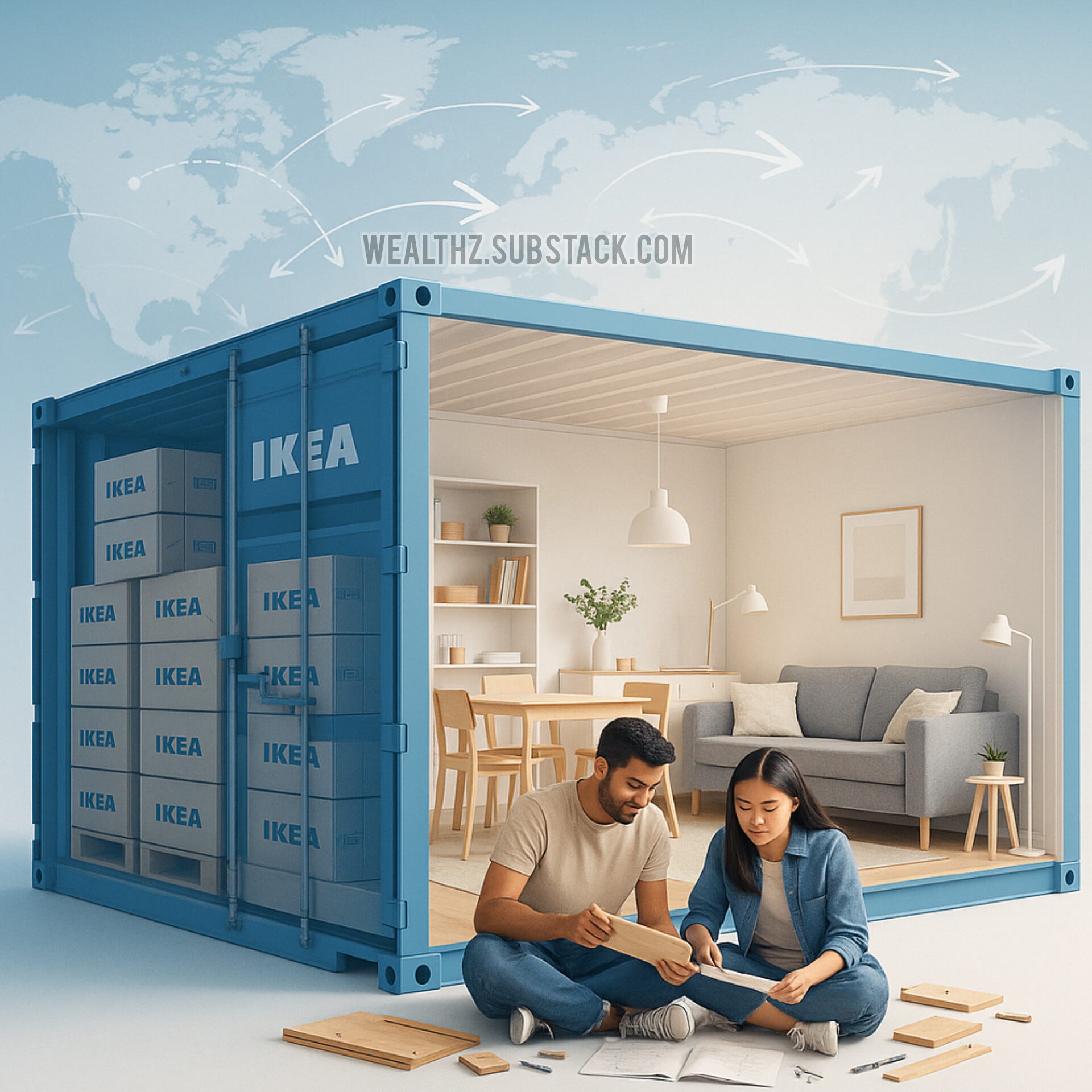IKEA’s Flat-Pack Disruption
In the vast and complex world of global retail, few innovations have been as quietly disruptive as IKEA’s flat-pack furniture design. What began as a simple logistical solution evolved into a foundational pillar of one of the world’s most successful business models. At first glance, the idea may seem modest—packaging furniture in flat, compact boxes and requiring customers to assemble it themselves. Yet this concept, born out of necessity, has transformed not just how furniture is made and sold, but how it is shipped, priced, stored, and experienced. At the heart of IKEA’s global dominance lies the flat-pack design—a breakthrough that redefined logistics and affordability in retail.
The origins of the flat-pack concept are as unpretentious as the furniture it supports. In the 1950s, IKEA employee Gillis Lundgren encountered a problem while trying to fit a table into his car after a photo shoot. In a flash of insight, he unscrewed the legs and laid them flat under the tabletop, reducing the table’s volume and making it easier to transport. This simple act of improvisation sparked a revolutionary idea: what if all furniture could be designed to be flat-packed, shipped in compact boxes, and assembled by the customer at home? This question would lead IKEA to reimagine not just furniture design, but the entire system surrounding its production, distribution, and sale. It was a practical solution, but it also aligned perfectly with IKEA’s founding vision: to provide well-designed, functional home furnishings at prices so low that as many people as possible could afford them.
The logistics of retail are often hidden from the consumer’s eye, but they are a core determinant of both cost and availability. Traditional furniture retailers typically ship assembled goods, which are bulky and inefficient to store or transport. These fully assembled items take up enormous space in warehouses and on delivery trucks, limiting the number of units that can be moved at once and increasing overall shipping costs. IKEA’s flat-pack solution turned this model on its head. By designing products that could be broken down into small, stackable components, IKEA drastically reduced the amount of space each item occupied during transit. This efficiency meant that more products could fit into a single shipping container, dramatically lowering transportation costs per unit.
These logistical improvements had ripple effects across IKEA’s entire business structure. Flat-pack furniture allowed for standardized packaging dimensions, which meant that global shipments could be coordinated with precision. Containers could be filled with maximum efficiency, and warehouse space could be used more economically. It also meant less damage during transit—flat boxes are sturdier and easier to secure than awkwardly shaped furniture. Fewer damages reduced the cost of replacements and improved customer satisfaction. These efficiencies weren’t just operational wins; they directly fed into IKEA’s pricing strategy, enabling the company to maintain lower retail prices than competitors without sacrificing profit margins.
Lower costs weren’t limited to transportation and storage. One of the most radical aspects of IKEA’s flat-pack model is its redistribution of labor—from the company to the consumer. In traditional furniture retail, companies must factor in the cost of assembly, whether it’s done in a factory or at the customer’s home. IKEA eliminated this cost entirely by handing over assembly duties to its customers. While this shift was once seen as a drawback, it eventually became part of IKEA’s identity—an empowering, do-it-yourself ethos that attracted a generation of value-conscious and independent-minded shoppers. The company framed assembly not as a burden, but as a collaborative experience: “You do your part, and we’ll keep the price down.”
This philosophy of shared responsibility was reflected in the store layout as well. IKEA stores are not just retail spaces—they are carefully designed ecosystems. Each store follows a standardized layout, beginning with showrooms that allow customers to see fully assembled products in realistic, staged environments. These rooms serve a dual purpose: they inspire customers with design ideas while also showing the potential of the flat-packed product. The journey continues through the warehouse section, where customers collect their chosen items in their flat-pack form, ready for transport. This structure minimizes labor costs within the store, since customers effectively serve as their own sales associates, warehouse staff, and sometimes even delivery personnel. It also supports IKEA’s low-price promise by reducing overhead at every point in the shopping experience.
The impact of flat-pack design extends even further into how consumers interact with furniture. IKEA didn’t just sell tables and chairs—it introduced a new kind of relationship between people and the objects in their homes. For decades, furniture had been viewed as a long-term investment—expensive, heavy, and difficult to move. IKEA’s flat-pack products changed that perception. Suddenly, furniture was lightweight, affordable, and easy to transport, making it more accessible to students, young families, and city dwellers. This shift contributed to a cultural redefinition of furniture from a once-in-a-lifetime purchase to something flexible and adaptable to different life stages. It democratized interior design by making style and functionality affordable for the masses.
In conclusion, IKEA’s flat-pack design is far more than a clever way to fit furniture into a box. It is a masterstroke of business innovation that touches every aspect of the company’s operations—from supply chain logistics and retail layout to pricing strategy and consumer behavior. By reimagining how furniture could be packaged, shipped, and assembled, IKEA built a global empire rooted in efficiency, simplicity, and affordability. The flat-pack model embodies the spirit of IKEA itself: practical, user-focused, and ingeniously cost-effective. It is a reminder that sometimes the most transformative ideas begin with nothing more than a table that didn’t quite fit in the trunk.
Join us: ➡️ Instagram | Telegram | X ⬅️




